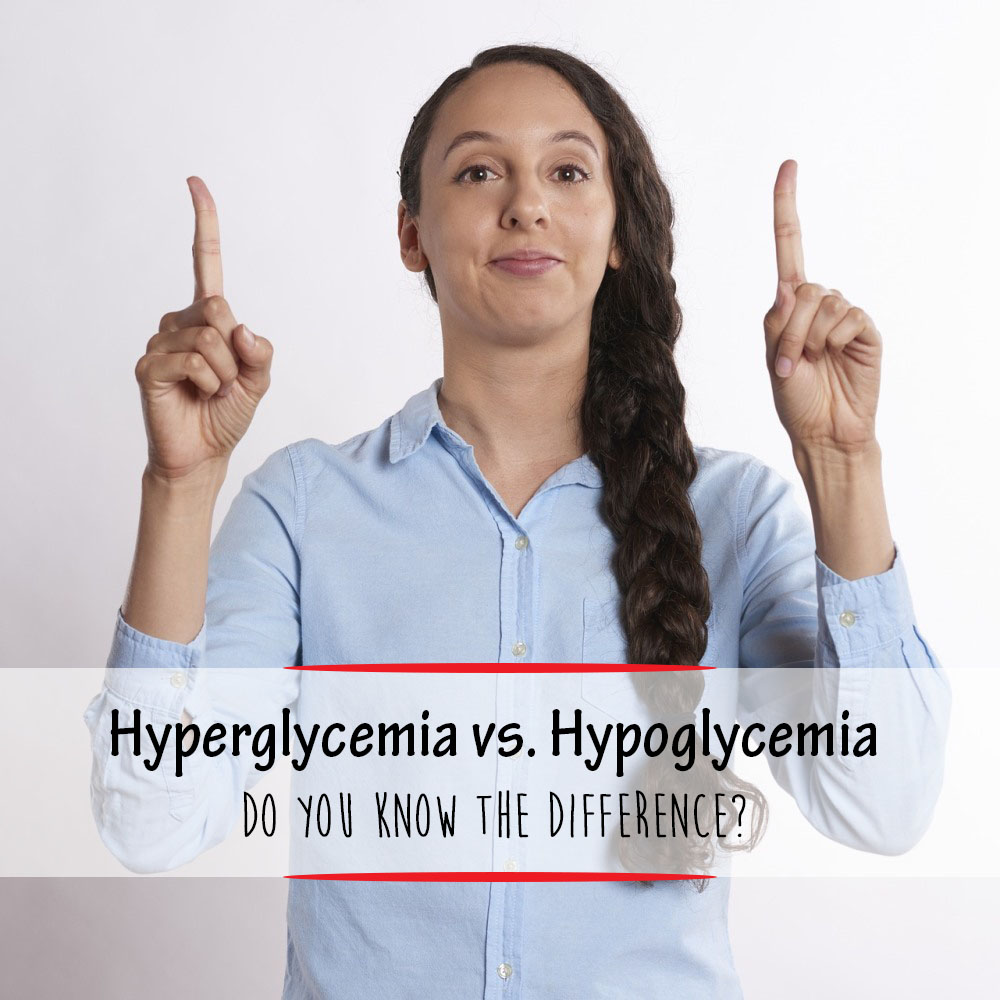Hyperglycemia (also spelled Hyperglycaemia)
Hyperglycaemia refers to having abnormally high blood sugar. The prefix “hyper” translates to “high.” The main symptoms of this condition include extreme thirst or polydipsia and frequent urination or polyuria.
Hyperglycaemia is a symptom that occurs in both Type 1 and Type 2 Diabetes.
In a healthy functioning system, the pancreas normally releases insulin after a meal to enable the cells of the body to utilize glucose for energy. In a non-diabetic, this fluctuation keeps glucose levels in a healthy range.
However with diabetes, the blood sugar levels become severely elevated. This can result in a medical emergency such as HHNS or hyperglycemia hyperosmolar state. Diabetic ketoacidosis or DKA can also be another severe consequence that can result from the body trying to cope with too much glucose.
Symptoms and Signs of Hyperglycemia
Diabetes is the main cause of hyperglycaemia; however, there are other medical conditions that may cause this condition to present including: Pancreatitis, Hyperthyroidism, Pancreatic cancer, Cushing’s syndrome, unusual tumors that secrete hormones, severe illnesses and certain medications.
The long term effects of hyperglycemia can be quite dramatic. Often, these issues develop slowly over a period of years, especially in diabetics who are not effectively managing their health properly.
Some key complications include: heart and blood vessel disease, which can increase the risk of peripheral artery disease, stroke, and heart attack. Nerve damage is another potential problem that can lead to tingling, pain and burning sensations. Gum disease and eye diseases including damage to the retina, cataracts and glaucoma are also prevalent.
Hypoglycemia (also spelled Hypoglycaemia)
Hypoglycemia on the other hand, is a medical emergency of diminished blood glucose or excessively low blood sugar. The prefix “hypo” translates to “low.” Also referred to as “Hyperinsulinism,” low blood sugar levels result from overstimulation of insulin in the pancreas.
The pancreas eventually becomes exhausted from releasing insulin too frequently in order to combat the high levels of sugar present in the blood.
Symptoms and Signs of Hypoglycemia
Symptoms of Hypoglycemia can vary greatly, however, the main concern are issues arising from an inadequate supply of glucose to the brain. Hypoglycemic manifestations can be divided into the following: Adrenergic manifestations due to falling glucose; lack of glucose in the brain resulting in neuroglycopenic symptoms; and glucagon manifestations.
Neuroglycopenic effects due to a shortage of glucose in the brain can cause a severe impairment of function, known as neuroglycopenia. Neuroglycopenic symptoms can range from dizziness, tiredness, weakness, blurred vision, confusion and difficulty concentrating. Inappropriate behavior can also occur that may be mistaken for intoxication. In severe cases, seizures, unconsciousness, coma and even death can occur.
Many people consider themselves to be “Hypoglycemic.” Typically, these individuals are referring to symptoms triggered by falling glucose adrenergic manifestations. This condition may present with anxiety, shakiness, coldness, dilated pupils, nervousness, tachycardia or rapid heartbeat and palpitations. Paresthesia or feeling of “pins and needles” or numbness is also commonly experienced. Immediately consuming some orange juice or candy can usually remedy this uncomfortable situation.
Glucagon manifestations of hypoglycemia may present with the following: abdominal discomfort; vomiting; hunger, stomach rumbling or borborygmus and headache.
There are some great ways you can be proactive with your diet and eating habits. Becoming educated on the glycemic index and starting to read food labels are great places to start. Try some new recipes and think positive about re-learning your relationship with food.




